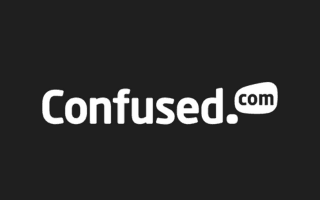
With car insurance premiums on the rise, it makes sense to look for ways to keep costs manageable. Many insurers let you spread payments for your annual premium across the year, which can help with budgeting. But additional fees mean that paying monthly could cost you more in the long run. We outline the pros and cons of paying annually vs monthly for car insurance, and other ways to keep premiums down.
How can I pay for my car insurance?
For standard car insurance policies, which typically last for a year before needing renewal, there are two main ways to pay.
- In a single, up-front annual payment.
- In monthly instalments.
When you get a quote for car insurance, directly with an insurer or via a price comparison site or broker, you’ll usually be shown both payment options.
You can also get temporary car insurance, which lasts for anything from a few hours to 30 days. Because temporary car insurance is for the short term, you’ll typically pay for it in one go (though you may be able to extend your cover for an additional premium).
What does paying annually for my car insurance involve?
Paying annually for your car insurance is pretty straightforward. Once you’ve completed the quote process and selected an insurer, your chosen insurer will tell you the cost of your annual premium, including any optional extras. Usually, the quoted price will be held for up to 30 days, to give you a chance to make up your mind.
When you’re ready, it’s a simple case of making the annual payment. Payment methods usually include debit card, credit card and, in some cases, bank transfer. Cover can start on the date you make payment, or a few days later, if you prefer.
What does paying monthly for my car insurance involve?
Paying monthly for your car insurance, as you’d expect, involves splitting your car insurance premium over multiple monthly instalments. You make one up-front payment at the start of the policy. This is followed by 11 (or occasionally 10) subsequent monthly payments that are taken using the same payment details you supplied at the outset.
So far, so straightforward. But if you want to pay monthly, there are a couple of things to be aware of.
- The first payment you make is likely to include an initial deposit (20% of your premium is typical). This means your initial payment will usually be higher than subsequent payments.
- When you pay in monthly instalments, insurers are effectively lending you part of the cost of the policy. Because of this, most insurers apply interest. This means that you’ll end up paying more by the end of the year than you would have if you’d paid in full, up-front.
How are monthly car insurance payments calculated?
When you run a quote for car insurance, you’ll be quoted two prices; to pay annually, and to pay in monthly instalments. The cost of paying in monthly instalments will include the interest that the insurer applies. There’s no “set” interest rate for car insurance monthly payments – it will vary between insurers, so you’ll need to compare carefully.
Some insurers split the total annual premium, equally including interest, across 12 (or sometimes 11) monthly payments. But most charge a higher up-front payment (including a deposit), and split the remainder equally over subsequent months.
Is it better to pay for my car insurance annually or monthly?
![]()
It depends what you mean by better. If by “better” you mean “cheaper”, then the answer is almost always annually. That’s because by paying annually, up-front, you won’t incur the extra interest charges that most insurers apply if you pay monthly.
But with the average annual car insurance premium sitting at £627 as of January 2024, and frequently topping £1,000 for younger, less experienced drivers, taking the financial hit all in one go isn’t always viable. If this is the case, monthly payments could help you to manage your budget.
You’ll get the same features and the same level of cover from an insurance policy whether you pay annually or monthly, so what’s best is really down to your personal circumstances.
Do I have to pay a deposit when I take out car insurance?
In many cases, yes. When you pay monthly, most insurers require you to make a larger proportional up-front payment – usually between 15 and 25% of the total premiums for the year.
A few insurers offer “no-deposit” car insurance policies, where the monthly instalments are split equally. This could lower the initial amount you need to pay, but you’ll need to weigh up this benefit against the total cost of the policy.
Does paying monthly for my car insurance affect my credit rating?
It can do, in a couple of ways.
Firstly, paying monthly effectively means taking out a loan (aka applying for credit) with an insurer. Simply getting quotes, for example via a price comparison site, won’t have an impact on your credit rating. But when you’ve selected a provider and complete the application process, it will run a credit check that will appear on your credit file. Be aware that multiple checks on your file in fairly quick succession can have a negative impact on your credit rating. So it’s best to review the details of a policy before you complete the application, so you can feel confident it’s the one you want and avoid the need to make multiple applications.
Secondly, once you have the insurance policy, how good you are at keeping up payments can also affect your credit rating. Making all of your payments on time can help prove your credit-worthiness and boost your credit score, particularly if it was on the low side to start with. But if you are late with or miss any payments, this could have a negative impact on your credit score. This could potentially affect your ability to get affordable credit with other providers in the future.
Can I use a credit card to pay for my car insurance?
Many car insurance providers let you make up-front annual payments via credit card. Provided that your credit card provider charges a lower interest rate than your car insurer, it can be a good way to spread the cost of your premium over several months. If your credit card provider charges a higher rate of interest than your car insurer, and you can’t afford to pay the credit card debt off in within a month or two, then you’d likely be better off using your car insurer’s pay-monthly option.
If you have a 0% credit card, and will be able to pay the full amount of your premium off within the interest-free period on your card, this could allow you to spread your car insurance payments without incurring any additional costs.
How can I cut the cost of my car insurance?
Paying your full annual premium up-front is one way to keep the cost of insurance down, but this isn’t always financially practical. Other tactics you can use include:
- Increase your excess. This is the amount you need to pay towards any claim. Opting for a higher excess usually reduces your premium. Just don’t set the excess so high that you couldn’t afford to pay it if you need to claim.
- Increase safety and security. If you can, park in a more secure location – such as a private driveway or in a garage. Boosting your car’s security features, such as alarms and immobilisers, could also make for lower premiums.
- Avoid non-essential modifications. Specialised paintwork or a turbocharged engine might buy you extra street cred…but it’ll also increase the cost of your car insurance.
- Add an experienced driver. If you’re a young, inexperienced driver in particular, adding a lower-risk, experienced named driver to your policy could lower your premiums.
- Drive safely and avoid the need to claim. The longer that you can drive without needing to make a claim on your insurance, the bigger the no-claims bonus you’ll build up.
- Consider telematics insurance. Telematics, or “black box” insurance, uses a device installed in your car to track your driving habits. Careful driving is rewarded with lower premiums.
- Shop around to compare price. This is probably the most important money-saving tip we can make, whether you pay annually or monthly for car insurance. Always shop around each year rather than just renewing with the same insurer, especially if you’ve been through any big life changes such as getting married or moving house. You can also use comparison quotes to haggle with your existing insurer.
Pros and cons of paying annually for car insurance
Pros
- Usually cheaper overall than paying monthly
- No impact on your credit score.
Cons
- Paying the full premium in one go can be a big financial hit
- A small number of insurers charge the same whether you pay monthly or annually.
Pros and cons of paying monthly for car insurance
Pros
- Lets you spread the cost of insurance over the year, potentially reducing strain on your other financial commitments
- Gives you the opportunity to improve your credit rating if you make all payments on time.
Cons
- Interest applied to monthly payments means you’ll end up paying more over the year
- You’ll need to go through a full credit check, and if you miss a payment this could affect your credit rating.
Bottom line
While paying monthly for your car insurance can avoid a big up-front financial hit, it will almost always cost you more overall, thanks to the interest you’ll be charged. So before resorting to paying monthly, we’d recommend using all the money-saving tactics at your disposal to cut the baseline costs of insurance premiums. Your wallet will thank you, whether you end up paying annually or monthly.
Frequently asked questions
More guides on Finder
-
Toyota MR2 insurance group and cost
Find out the cost and car insurance group of Toyota MR2 models and see how much you could pay based on age, location and model.
-
Vauxhall Crossland insurance group and cost
Find out the cost and car insurance group of Vauxhall Crossland models and see how much you could pay based on age, location and model.
-
Toyota Yaris Cross insurance group and cost
Find out the cost and car insurance group of Toyota Yaris Cross and see how much you could pay based on age, location and model.
-
Volvo C30 insurance group
Find out how much it costs to insure a Volvo C30 and how to save on your car insurance premiums.
-
Vauxhall Insignia insurance group
Find out how much it costs to insure a Vauxhall Insignia and how to save on your car insurance premiums.
-
Tesla Model X insurance group
Find out how much it costs to insure a Tesla Model X and how to save on your car insurance premiums.
-
Tesla Roadster insurance group
Find out how much it costs to insure a Tesla Roadster and how to save on your car insurance premiums.
-
Toyota Prius insurance group
Find out which insurance group the Toyota Prius falls under and how much it costs to insure.
-
Voided and cancelled car insurance
Read our guide to understand why honesty is always the best policy to avoid your car insurance being voided or cancelled.
-
Get agreed value car insurance quotes online
Find out how agreed value car insurance works and if it’s the right option for you.
